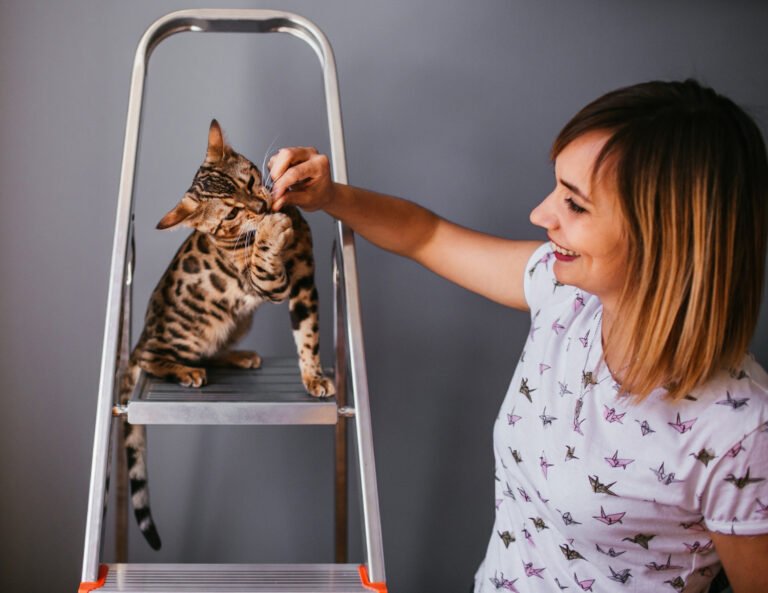How to train your Cat to Sit
Cats are independent creatures, but training them has many benefits. Here’s why teaching your cat to sit is important: Learn how to train your cat to sit.
- Encourages discipline—Helps create a routine and promotes good behavior.
- Makes grooming easier – Your cat will stay still while you brush or clip their nails.
- Assists with handling—Vets and pet parents can handle the cat more easily.
- Prepares for mealtime—Your cat will sit patiently instead of jumping or pawing at food.
How To Train Your Cat To Sit: A 10-Step Guide
What You’ll Need
Before you start, gather these essentials:
- A calm, confident cat (older or unwell cats may struggle).
- A quiet space without distractions.
- Tasty treats that are small and easy to chew.
- A bit of patience—every cat learns at their own pace.
Step 1: Get Your Cat’s Attention
How to Train Your Cat to Sit? Hold a small treat between your thumb and index finger with your palm facing upward. Make sure your cat notices it.
Step 2: Position Yourself Correctly
Stand or kneel in front of your cat while holding the treat a few centimetres from their nose. If your cat is nervous, sitting at their level may help them feel more comfortable.
Step 3: Move the Treat Upward
Slowly lift the treat above your cat’s nose. Their eyes should follow the movement.
Step 4: Guide Their Movement
Once the treat is about five centimetres above their nose, gently move it slightly back toward their tail. This motion encourages your cat to shift into a seated position.
Step 5: Reward Immediately
As soon as your cat sits, say “yes” and give them the treat. If they don’t sit right away, hold the treat in place and give them time to respond.
Step 6: Repeat the Process
If your cat follows the treat well, toss it a short distance so they reset their position. Repeat steps 1-5 multiple times. This will helps you to train your Cat to Sit.
Step 7: Introduce a Hand Signal
Once your cat understands the movement, switch to a hand signal—hold the treat in front of them and flick your wrist up. Reward them when they respond correctly.
Step 8: Reduce Treat Dependency
Now, pretend to take a treat but don’t actually pick one up. If your cat sits with just the hand signal, reward them with a real treat afterward.
Step 9: Add a Verbal Cue
Say a word like “sit” right before giving the hand signal. Repeat this several times until your cat associates the word with the action.
Step 10: Practice and Extend Training
Gradually increase the distance between you and your cat while practicing. You can also encourage them to sit for longer before receiving a treat
Training Tips & Tricks
- Keep training sessions short—3 minutes max, three times a day.
- Always use positive reinforcement—never force your cat into position.
- Be patient—some cats learn quickly, while others take more time.
- Avoid distractions—train in a quiet environment for the best results.
Common Training Challenges and Solutions
My cat ignores the treat.
Try different treats—soft treats, cooked chicken, or tuna can be more enticing.
My cat loses interest quickly.
Keep sessions short and engaging. End on a positive note, even if progress is slow.
My cat gets distracted.
Train in a quiet room and remove distractions like toys or other pets.
Final Thoughts
Training your cat to sit is an enjoyable and rewarding experience. With consistency and patience, most cats will learn this trick within a few days. Remember to keep training fun and use plenty of positive reinforcement. Your cat will soon sit on command, making everyday tasks like grooming and feeding much easier!
Related Articles
How to train a Cat: the ultimate cat training guide
Why Does my cat follow me everywhere? – Cat training Guideline






